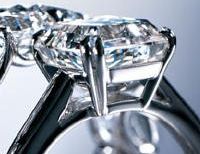Hey everyone,
longtime listener, first time caller, as they say....
There''s tons of information on diamonds out there, but what about settings? I want to get a custom design made in platinum and would like to know more about the how they are made. What are the fabrication processes for platinum settings? I know about lost wax casting, which seems to be what 95% of the settings are, and have also heard of "wire formed" and "hand-made " (or is this "hand-forged"). What are these techniques? Are there others? How do the various techniques compare with each other? What does a top-end designer use?
More specifically, which techniques will result in a cleaner look? What would be the technique used to make a basket like that in the attached picture?
thanks for your advice.

longtime listener, first time caller, as they say....
There''s tons of information on diamonds out there, but what about settings? I want to get a custom design made in platinum and would like to know more about the how they are made. What are the fabrication processes for platinum settings? I know about lost wax casting, which seems to be what 95% of the settings are, and have also heard of "wire formed" and "hand-made " (or is this "hand-forged"). What are these techniques? Are there others? How do the various techniques compare with each other? What does a top-end designer use?
More specifically, which techniques will result in a cleaner look? What would be the technique used to make a basket like that in the attached picture?
thanks for your advice.





300x240.png)